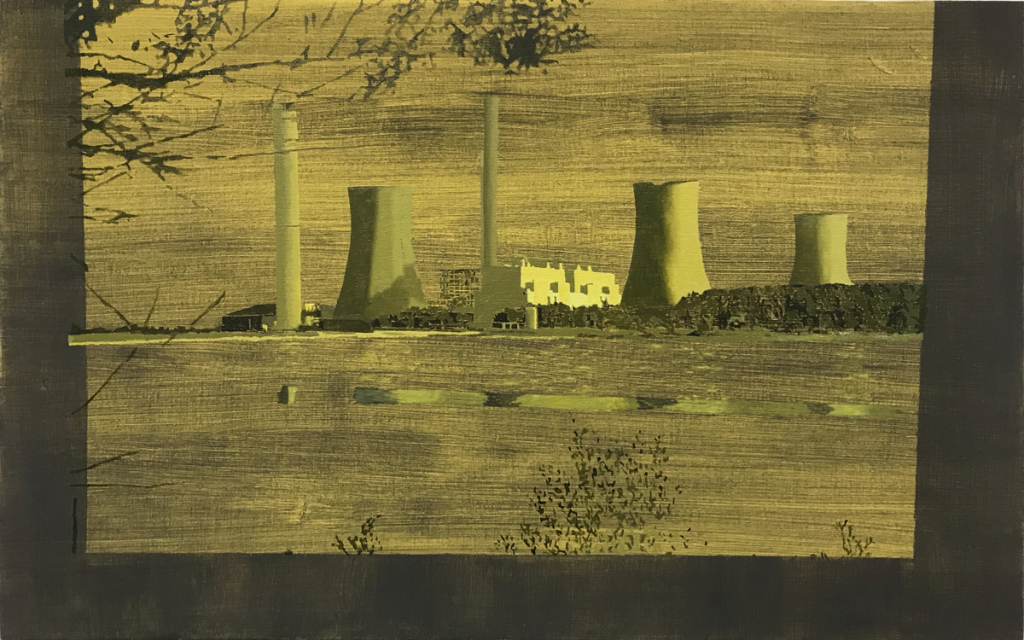
Brooklyn-based artist Greg Lindquist has spent the past four years looking at the environmental consequences of coal-fueled power plants across the country and the ash run-off they produce. Here, he discusses the incentive for his series “Smoke and Water,” why he was using the word collusion well before the last presidential election, and the ways in which landscape painting can physically embody environmental issues.
“The whole impetus for the series was the coal ash spill that happened on the border between Virginia and North Carolina in 2014, when something like 39,000 tons of ash were accidentally released into the river. With this spill, the ash sat on the surface of the river for about 24 hours and created these pleasing monochromatic swirls. It interested me as visible evidence of the event, but also how the evidence itself seemed to signify a certain beauty of something that has ugly consequences for ecosystems and human health. I was also interested in tracing the relationships of responsibility at a governmental level. In other words, I was looking at the collusions—and I’ve been using this word for the past four years, well before anything else—of profiteering electric companies and bodies of state regulation. With regard to the North Carolina spill, the governor at that time was Pat McCrory, who had worked at Duke Energy—the company responsible for the spill—for 30 years. As I traced the relationships and the environmental regulations that had been rolled back, it all came from the fact that McCrory had put a lot of his colleagues from Duke Energy in positions at the North Carolina Department of Environmental Quality. And then on top of that, it’s more appealing for these companies to spend millions of dollars in legal fees fighting the regulations and fighting the clean-up efforts than to just clean it up.
‘Smoke and Water’ is an art-historical intervention in the genre of landscape, which, from the beginning of its inception, has been about representing property. The 19th-century British landscape tradition goes into that, but also the Hudson River School’s representation of Western territories, expansion, and Manifest Destiny—having this God-given right to colonize, basically. I’m looking at another type of colonization—one of toxicants leaching into the landscape, into the waterways, into the wells, and into people’s back yards. It makes the ash that much more important to collect and dispose of. One of the motifs that runs through all of the paintings is smokestacks. They’re a locus of struggle. On the one hand, we look at these smokestacks and think about pollutants. But on the other, when these smokestacks were built in the 1970s and ’80s, those were signifiers of jobs and prosperity.
One of the limitations I’ve discovered with landscape is my own awareness that I’m making a painting. There are certain values encoded into the genre of landscape, particular notions of beauty. Which is great, because it can draw people in to look at an image that has uglier content. But at the same time, I question the medium of painting as a representational mode. It can show you the surface, but it can’t necessarily show you all of those relationships and structures that are underneath it. In these paintings, I’m mixing the ash from these power plants into the acrylic, and using it as an underpainting in the works themselves. For me, that creates a complex relationship between the viewer and the work. It’s not just about what’s seen and not seen, making visible what’s invisible, but also how can I depict these contradictions and how are they embodied in the works themselves.”

